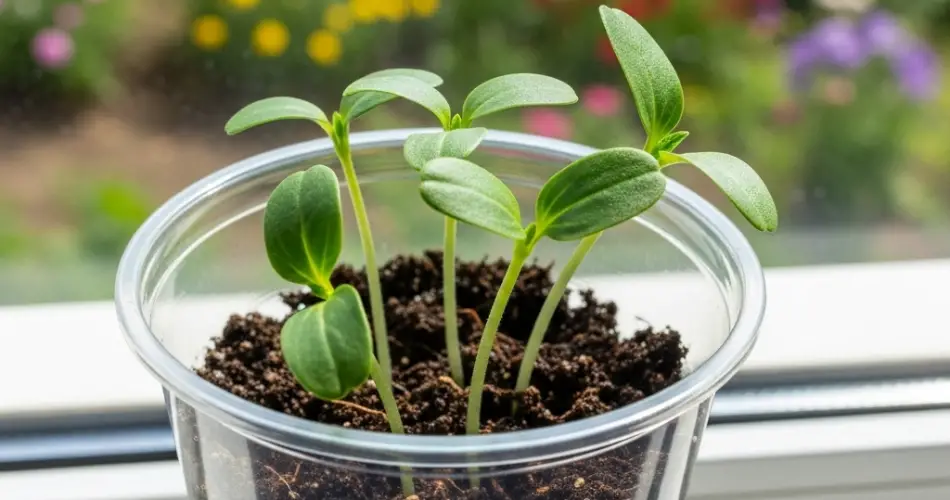Starting a vegetable garden from seed is one of the most rewarding parts of gardening—but also one of the most delicate. Young seedlings can easily become spindly, pale, or slow-growing if their basic needs aren’t met. However, by following a few key rules, even the weakest seedlings can become strong, stocky, and ready for transplanting in just a few days.
These 10 essential seedling care tips help create the ideal conditions for explosive root development, lush green growth, and resilience against stress. Whether you’re growing tomatoes, peppers, cucumbers, or leafy greens, these strategies will ensure your seedlings go from fragile to vigorous in no time.
1. Use Quality Soil with Good Structure
Seedlings thrive in loose, airy soil that retains moisture but drains well. Avoid heavy garden soil or compacted mixes. Use a seed-starting blend enriched with compost or coconut coir. Add vermiculite or perlite to improve airflow around the roots.
2. Provide Bottom Heat
Seeds germinate faster and grow stronger when they’re kept warm. Use a heat mat or place trays in a consistently warm area (20–25°C or 68–77°F). This is especially important for heat-loving crops like tomatoes, peppers, and eggplants.
3. Give Them Plenty of Light
Weak, leggy seedlings are often a result of insufficient light. Natural windowsills rarely offer enough intensity or duration. Use grow lights placed 10–15 cm (4–6 inches) above the seedlings. Keep the lights on for 12–14 hours a day.
4. Water Gently and Correctly
Overwatering is one of the most common seedling mistakes. Always water from below (bottom watering) to avoid compacting the soil or promoting fungal disease. Let the surface dry slightly before rewatering, but don’t allow the soil to become bone dry.
5. Use a Gentle Natural Fertilizer
Once your seedlings have developed their first true leaves, start feeding them with a weak solution of organic fertilizer—such as compost tea, diluted fish emulsion, or an infusion of banana peels and eggshells. A weekly feeding will boost chlorophyll production and root strength.
6. Ventilate and Strengthen Daily
Airflow is essential for healthy seedlings. Open a window nearby or place a fan on low for a few hours a day to strengthen stems and prevent fungal issues like damping off. Gently brushing your hand over the tops of the plants once a day also stimulates stem development.
7. Keep Seedlings Close Together Initially
In the early stages, keeping seedlings closer together can create a microclimate with slightly higher humidity and warmth. As they grow, thin them out to prevent crowding and ensure each plant gets enough light and airflow.
8. Gradually Adjust Temperature
Don’t shock your plants by suddenly exposing them to cool temperatures. Begin hardening them off slowly by reducing indoor temperatures at night or opening a window during the day. This helps prepare them for outdoor conditions.
9. Transplant at the Right Time
Transplant your seedlings to larger pots or into the ground only when they’ve developed a strong root system and several sets of true leaves. Handle them gently by the leaves, not stems, to avoid damage.
10. Watch for Deficiencies or Pests Early
Yellowing leaves, purplish veins, or stunted growth can be signs of nutrient deficiencies or poor soil conditions. Use organic foliar sprays or soil amendments as needed, and inspect regularly for pests like fungus gnats or aphids.
Bonus Tip: The 2-Day Recovery Boost
If your seedlings are looking especially weak or pale, here’s a simple recovery trick:
-
Mix 1 liter of warm water with:
-
1 teaspoon of liquid seaweed or fish emulsion (optional)
-
1 teaspoon of honey or molasses (to feed beneficial microbes)
-
A small pinch of baking soda (natural antifungal)
-
Mist the leaves gently and water lightly with the rest. Within 24–48 hours, most seedlings will perk up, deepen in color, and resume healthy growth. This tonic works as a quick fix to jump-start development.
Final Thoughts
Strong seedlings don’t just happen—they’re the result of consistent care, attention to detail, and a balanced environment. By following these 10 essential growing rules, you can ensure your seedlings develop strong roots, sturdy stems, and rich green leaves—setting them up for success once they’re transplanted into the garden.
Even if your seedlings start out weak or spindly, it’s never too late to turn things around. With just a few adjustments, you can transform struggling sprouts into robust young plants that are ready to thrive outdoors.



